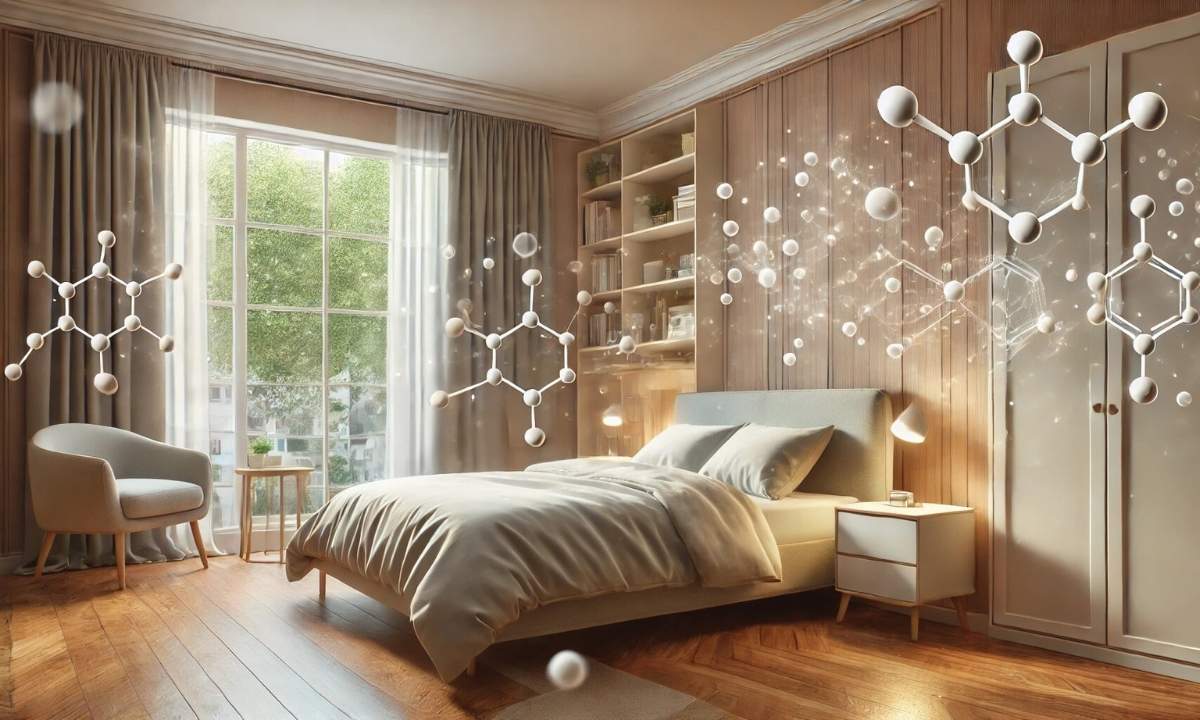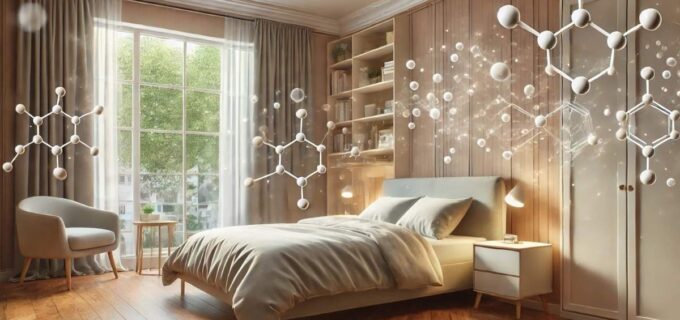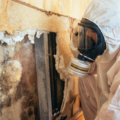
Did you know that humans produce 1.5 ounces of formaldehyde every day? But what is formaldehyde? Formaldehyde, a colorless gas with a pungent odor, is a common chemical in building materials and household products. While it is essential for many industrial processes, prolonged exposure to formaldehyde can pose significant health risks, including respiratory irritation, allergies, and even cancer. The risk of formaldehyde buildup is even higher in Singapore’s warm and humid climate, where homes are often well-sealed for air conditioning.
This blog aims to equip you with the knowledge and tools to identify potential sources of formaldehyde in your home and effectively eliminate this hidden danger. From understanding formaldehyde and some familiar sources to implementing proven removal strategies, we’ll cover everything you need to create a healthier living environment for you and your loved ones.
Understanding Formaldehyde
Formaldehyde is an organic compound composed of Carbon, Hydrogen, and Oxygen; its chemical formula is CH2O. It is a simple chemical compound that is a pungent gas at room temperature but is commonly dissolved in water as formalin. It’s a fundamental building block in various industrial processes and is also naturally present in small quantities in living organisms. Although essential in many applications, formaldehyde’s volatility and reactivity contribute to its potential health risks upon exposure.
How can Formaldehyde Affect One’s Health?
Physical Impacts of Formaldehyde
Short-term effects
- Sensory irritation: Even at low levels, it can irritate the eyes, nose, and throat, causing burning sensations, watery eyes, and coughing.
- Skin reactions: Direct contact may lead to skin irritation or allergic dermatitis.
- Respiratory problems: Higher exposures can trigger or worsen asthma symptoms and cause breathing difficulties.
Long-term effects
- Chronic respiratory issues: Prolonged exposure may increase the risk of chronic respiratory problems like bronchitis.
- Neurological effects: Some studies suggest potential links between long-term exposure and neurological symptoms like headaches and memory problems.
- Cancer risk: The International Agency for Research on Cancer classifies formaldehyde as a human carcinogen, with evidence linking it to an increased risk of nasopharyngeal cancer and leukemia.
Vulnerable groups
- Children: Young children may be more susceptible to the effects of formaldehyde due to their developing respiratory systems.
- Individuals with pre-existing conditions: Those with asthma, allergies, or other respiratory conditions may experience more severe symptoms.
Thus, formaldehyde can be highly detrimental to one’s physical health, making it essential to ensure minimal exposure to it. However, it is also important to note that the extent of formaldehyde’s impact on oneself depends primarily on one’s sensitivity.
Mental Impacts
Although the physical impacts of formaldehyde are more widely recognized, research suggests that formaldehyde can affect one’s mental health, too. Some of these impacts include:
- Mood disturbances: Long-term exposure to low levels of formaldehyde has been associated with increased reports of depression, anxiety, and irritability.
- Cognitive impairment: Studies indicate possible links between formaldehyde exposure and difficulties with memory, concentration, and overall cognitive function.
- Sleep disruption: Formaldehyde’s impact on the central nervous system may contribute to sleep disturbances, further affecting mental health.
It’s important to note that the link between formaldehyde and mental health is still under investigation, and individual responses can vary. However, its potential to affect mental health underscores the importance of identifying and addressing formaldehyde sources in your environment.
What Are the Signs That Your Home Has High Levels of Formaldehyde
Sensory Cues
- Strong, pungent odor: A distinct chemical smell, often similar to nail polish remover or a new car, may be noticeable, especially in newly renovated or furnished spaces.
- Eye, nose, and throat irritation: Occupants may experience burning or watery eyes, a scratchy throat, or a persistent cough, particularly when spending extended periods indoors.
Physical Symptoms
- Headaches and dizziness: These can be triggered or worsened by formaldehyde exposure, especially in sensitive individuals.
- Skin rashes or allergic reactions: Direct contact with formaldehyde or formaldehyde-releasing materials can cause skin irritation or dermatitis.
- Respiratory difficulties: Wheezing, shortness of breath, and asthma exacerbation may occur, particularly in individuals with pre-existing respiratory conditions.
Other Indicators
- Recent renovations or new furniture: New construction or adding new pressed wood furniture, flooring, or cabinetry can significantly increase formaldehyde levels due to the release of formaldehyde.
- Poor ventilation: Inadequate ventilation traps formaldehyde and other pollutants indoors, leading to higher concentrations.
- Presence of known formaldehyde sources: Certain materials and products, such as plywood, particleboard, insulation, paints, varnishes, and even some cleaning products, can release formaldehyde into the air.
If you suspect a house has high formaldehyde levels, promptly addressing the issue is crucial.
Ways to Eliminate Formaldehyde from your Home
There are several effective ways to eliminate formaldehyde from your house, ranging from simple lifestyle changes to investing in specific technologies:
Immediate Actions
- Ventilation: Increase airflow by opening windows and doors, especially during and after activities that may release formaldehyde (e.g., painting, using cleaning products).
- Air Purifiers: Invest in air purifiers with HEPA filters and activated carbon to capture and remove formaldehyde.
- Temperature and Humidity Control: Formaldehyde emissions increase with temperature and humidity. Keeping your home cool and well-ventilated can help minimize the release of formaldehyde.
Long-Term Strategies
- Source Removal: Identify and remove primary formaldehyde sources, such as old pressed wood furniture or carpets.
- Material Selection: When buying new products, choose low- or no-formaldehyde options (look for certifications like “Green Label”).
- Sealing: Seal exposed surfaces of pressed-wood materials with a formaldehyde-sealing primer or paint.
- Houseplants: Certain plants, like spider plants and Boston ferns, are known to absorb formaldehyde, though their impact may be limited.
Additional Tips
- Regular Cleaning: Dusting and vacuuming regularly can help remove formaldehyde particles that settle on surfaces.
- Professional Cleaning: For significant formaldehyde concerns, consult a professional cleaning service specializing in indoor air quality.
Remember, a multi-pronged approach is most effective in eliminating formaldehyde. Combining ventilation, air purification, and source control will significantly improve indoor air quality and safeguard health.
Protect Your Home and Health from Formaldehyde in Singapore
In conclusion, while common in many everyday household items, formaldehyde poses a severe health risk, particularly in Singapore’s warm and humid climate, where homes are often sealed for air conditioning. The key to mitigating these risks is a proactive approach: identifying potential sources within your home and taking deliberate steps to minimize exposure.
Simple actions like improving ventilation and using air purifiers can make a significant difference. However, consider replacing high-risk items like pressed-wood furniture with low-formaldehyde alternatives and sealing exposed surfaces for more lasting protection. Additionally, incorporating houseplants and controlling indoor temperature and humidity can help further reduce formaldehyde levels.
Creating a healthier living environment requires both immediate and sustained efforts. By being mindful of the materials you bring into your home and maintaining good indoor air quality practices, you can effectively safeguard your home against the dangers of formaldehyde, ensuring a safer and healthier space for you and your loved ones.
Take control of your indoor air quality and safeguard your home from the hidden dangers of formaldehyde. For expert guidance and professional air quality services, reach out to Big Red today. Call us at 6241 9443 or send a WhatsApp message to +65 9321 9321. Let Big Red Singapore help you create a cleaner, healthier living environment with our specialized formaldehyde removal solutions.




